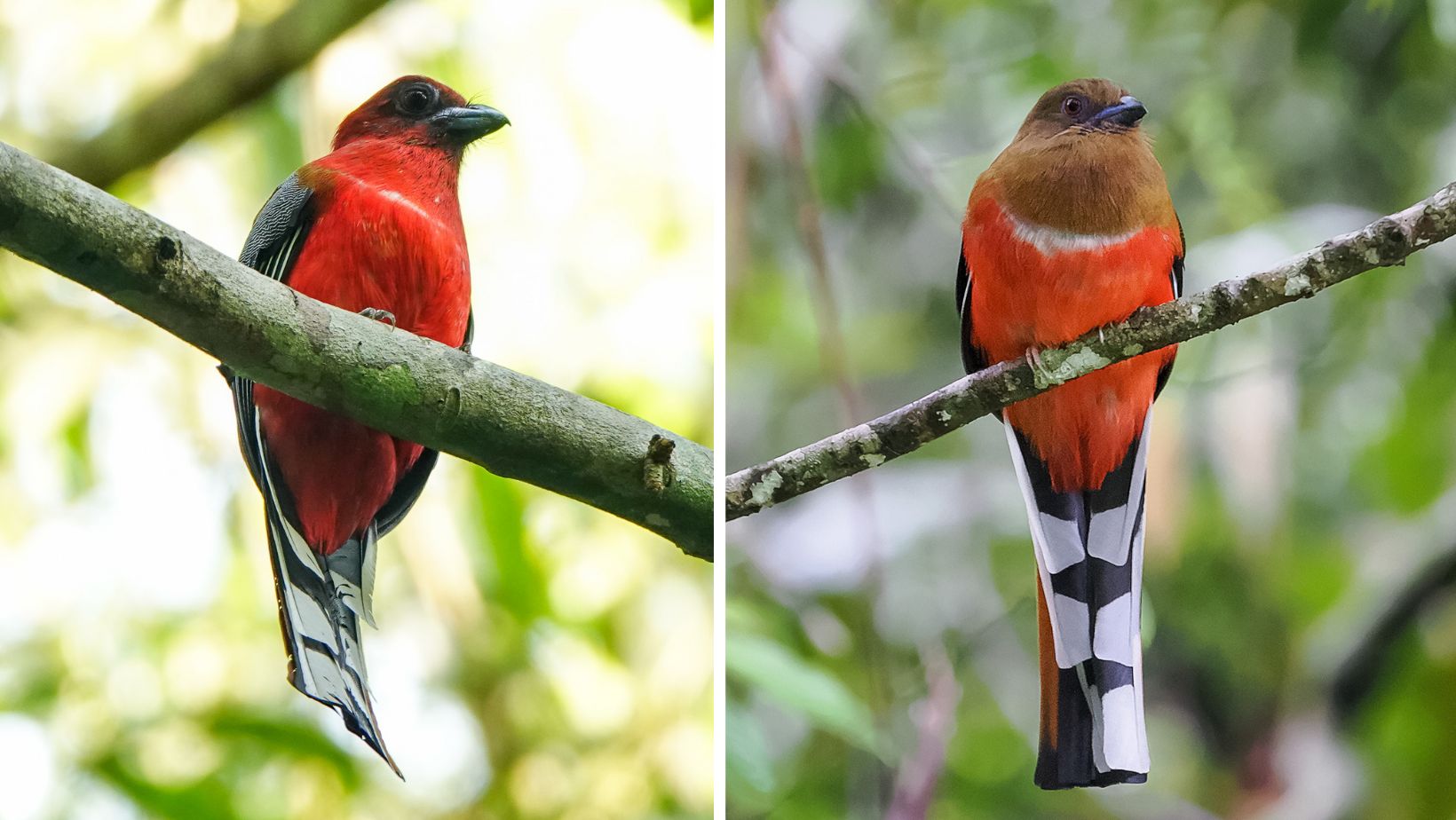
A bird that varies in coloration throughout its range but always follows the same general color scheme
Meet the Red-headed Trogon
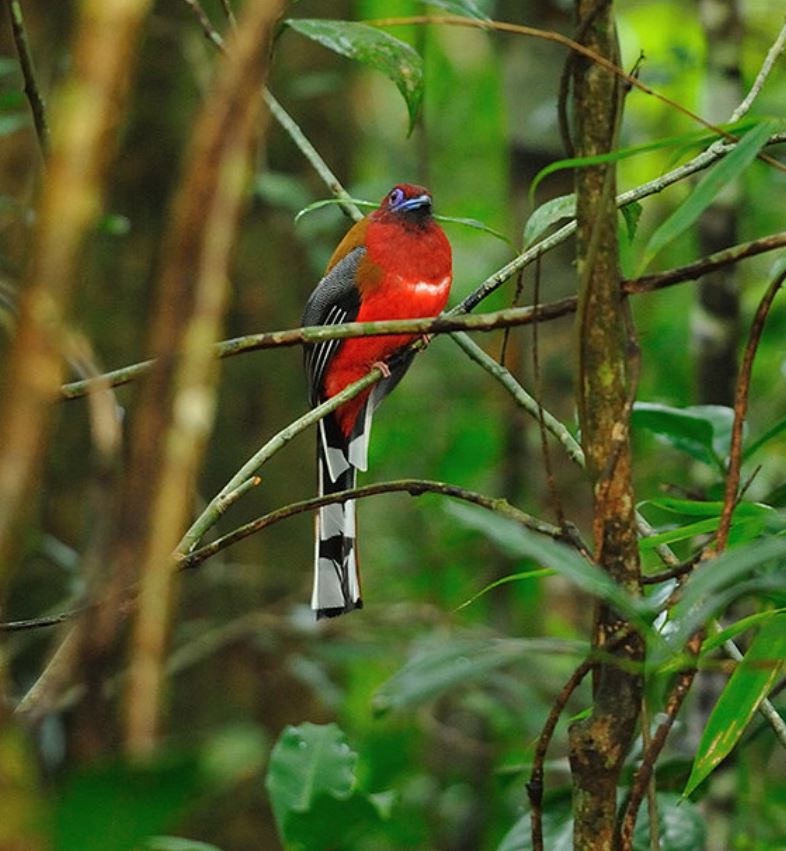 “Red-headed Trogon male” by tontantravel is licensed under CC BY-SA 2.0. (cropped)
“Red-headed Trogon male” by tontantravel is licensed under CC BY-SA 2.0. (cropped)
The red-headed trogon (Harpactes erythrocephalus) typically measures around 34 cm (13 in) in length. Notably, the male possesses a distinct red head and breast, a characteristic feature unique among the Trogon group. On the other hand, the female resembles the Diard’s trogon but lacks a speckled undertail. The adult male displays a dull crimson head, neck, and upper breast. A narrow white band crosses the mid breast, below which the lower breast to the abdomen transitions from light red to pink. The flanks exhibit a pale red hue, while the mantle and back of the bird are characterized by rusty brown coloration. Mauve-blue legs support the male as it perches on branches. Wing coloration includes vermiculated black and white patterns on the lesser and median wing coverts, secondary coverts, and outer webs of tertials and secondaries. The primary feathers also feature black and white coloring. The tail consists of dark brown central feathers with black tips, black second and third pairs, and white outer pairs with black bases. The bird’s face is defined by a black-tipped cobalt blue bill, deep mauve-blue gape and eyering, and reddish-brown irises.
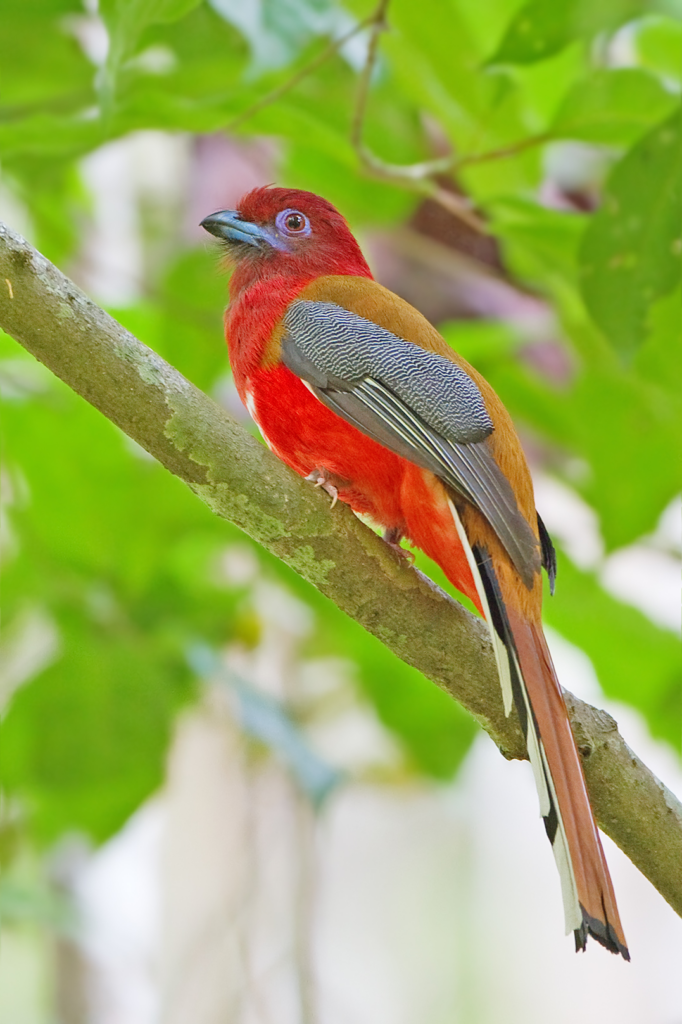 “File:Harpactes erythrocephalus – Khao Yai.jpg” by JJ Harrison ([email protected]) is licensed under CC BY-SA 3.0.
“File:Harpactes erythrocephalus – Khao Yai.jpg” by JJ Harrison ([email protected]) is licensed under CC BY-SA 3.0.
In contrast, the adult female’s head, neck, and upper breast are olive-brown. Similar to the male, a narrow white band runs across the mid breast, below which the lower breast to abdomen showcases a light red to pink shade. The mantle and back display an orange-to-brown color. The wings feature vermiculated dark brown and yellowish-brown patterns. The tail feathers closely resemble those of the males. Female bill, gape, and bare eyering are pale blue.
Juveniles exhibit buff-brown head, neck, and upper parts, while the underparts appear buff white. Central tail feathers lack the black tip observed in adults.
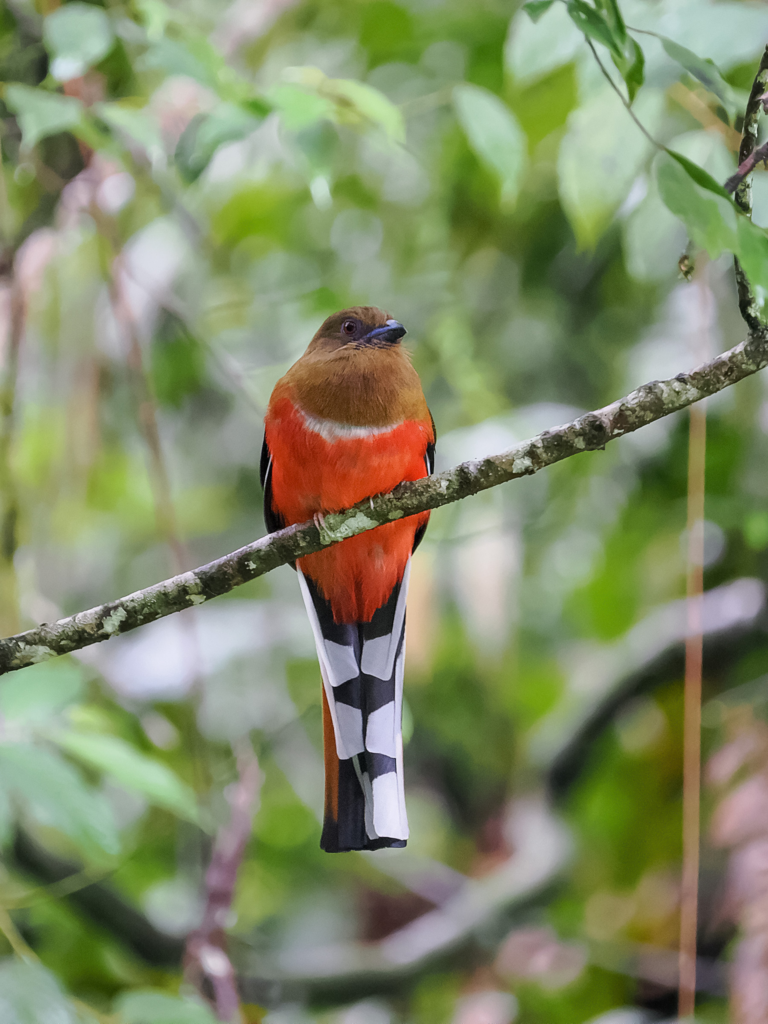 “red-headed trogon, trogon à tête rouge, trogón cabecirrojo” by CheongWeei Gan is licensed under CC BY 4.0.
“red-headed trogon, trogon à tête rouge, trogón cabecirrojo” by CheongWeei Gan is licensed under CC BY 4.0.
The red-headed trogon has a wide distribution spanning from central Nepal, Southeast Asia, and southern China to Sumatra. It is less common in Nepal due to habitat destruction, leading to a decline in population numbers. In contrast, it is relatively frequent in northeastern India, and Bhutan, and dispersed in localized areas of Bangladesh.
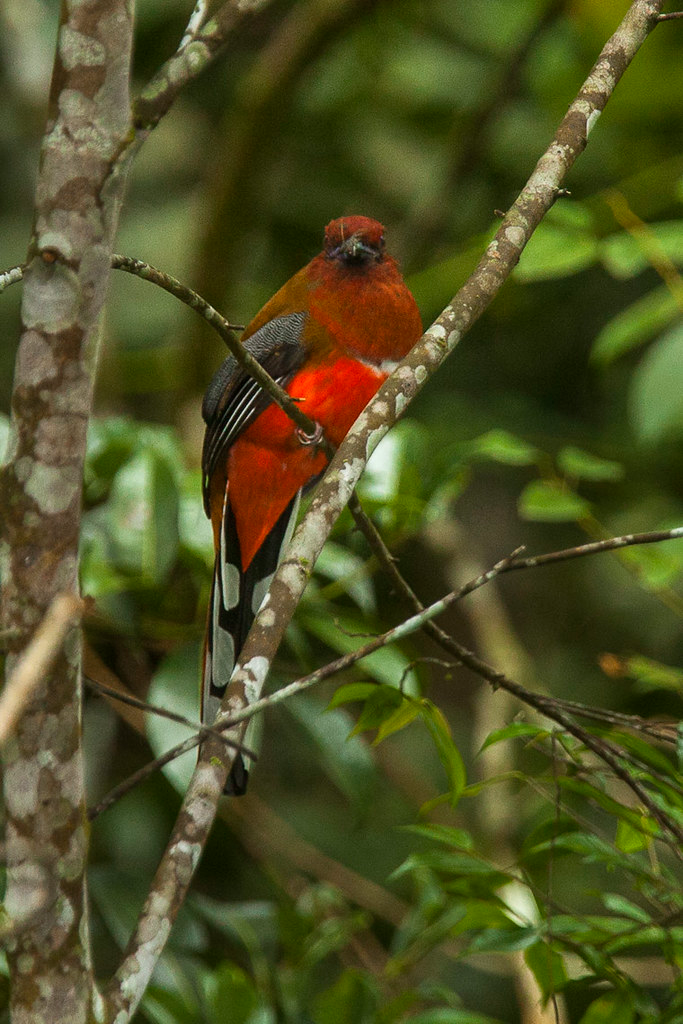 “Red-headed Trogon – Malaysia_MG_7157” by fveronesi1 is licensed under CC BY-SA 2.0.
“Red-headed Trogon – Malaysia_MG_7157” by fveronesi1 is licensed under CC BY-SA 2.0.
Its favored habitats include upland forests, dense broadleaved forests, and tropical and subtropical zones in the Himalayan foothills. Throughout Southeast Asia, it is found in broadleaved evergreen forests ranging from elevations of 300 to 2,600 m (980 to 8,530 ft). In specific regions, such as Myanmar, Laos, and Vietnam, it thrives in bamboo and oak forests, as well as evergreen forests and adjacent plains.
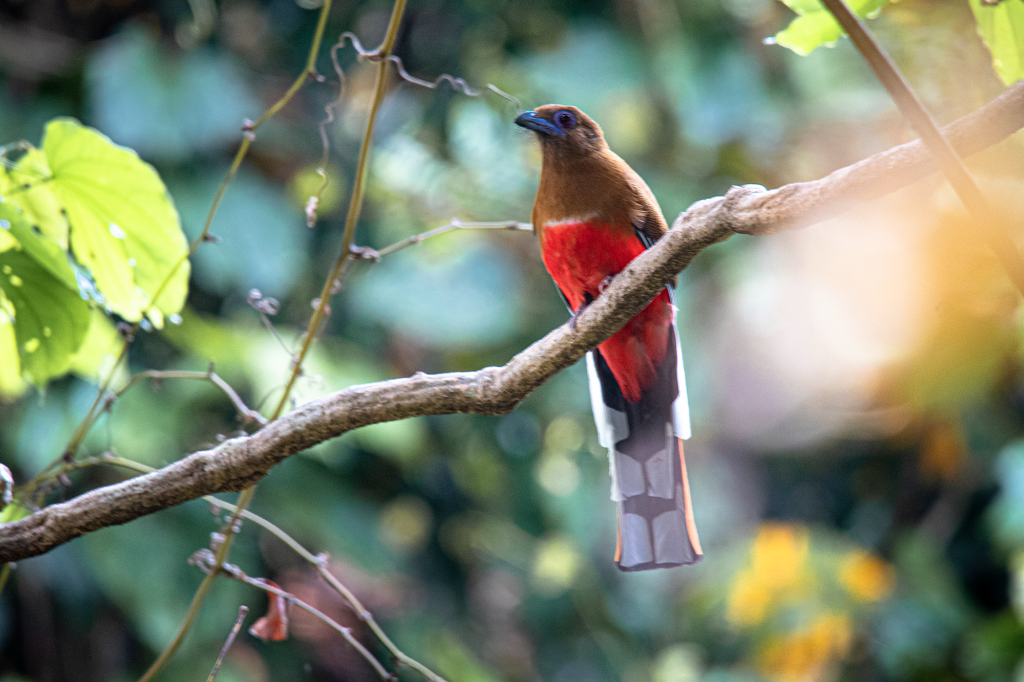 “Red-headed Trogon, Sangu-Matamuhuri Reserve Forest, Bangladesh 0A5A8156” by Nisad.nhn is licensed under CC BY-SA 4.0.
“Red-headed Trogon, Sangu-Matamuhuri Reserve Forest, Bangladesh 0A5A8156” by Nisad.nhn is licensed under CC BY-SA 4.0.
The red-headed trogon’s diet primarily consists of insects and their larvae, encompassing various types of orthopterans, stick insects, cicadas, flies, beetles, centipedes, woodlice, and moths. Additionally, it incorporates leaves and fruits into its feeding habits.
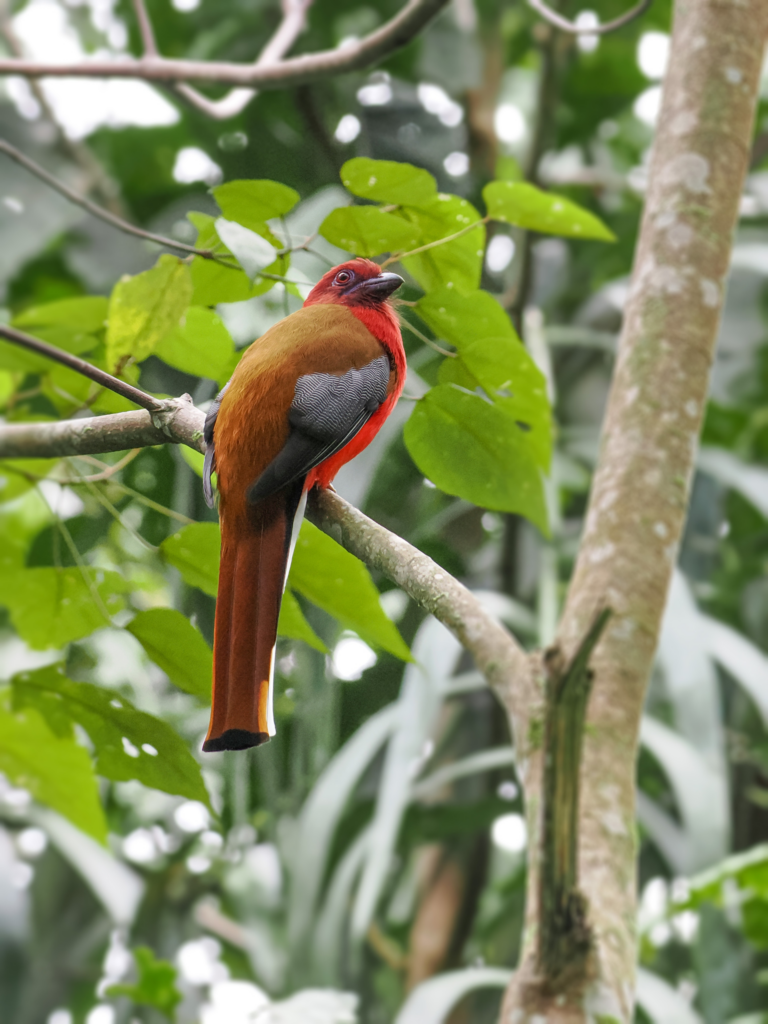 “red-headed trogon, trogon à tête rouge, trogón cabecirrojo” by CheongWeei Gan is licensed under CC BY 4.0.
“red-headed trogon, trogon à tête rouge, trogón cabecirrojo” by CheongWeei Gan is licensed under CC BY 4.0.
The red-headed trogon is frequently observed perching on shaded branches, either alone or in pairs while awaiting prey. Its flight pattern between trees is often slow and close to the ground, rarely exceeding a few meters in height. The species displays heightened activity during the early morning and nighttime hours when it actively hunts moths at the fringes of forest clearings. In regions such as central southern Thailand, it coexists with the Orange-breasted trogon, often following flocks of foraging birds to capitalize on flushed insects. While mostly sedentary, some observations indicate seasonal elevational migrations in parts of Laos.
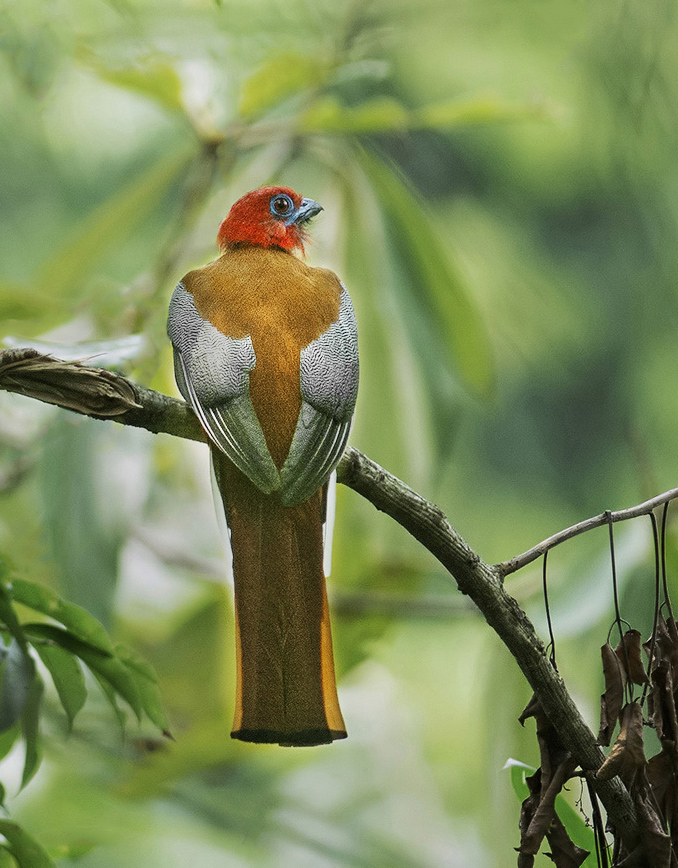 Photo courtesy of Rejaul karim.rk/CC BY-SA 4.0
Photo courtesy of Rejaul karim.rk/CC BY-SA 4.0
This trogon species constructs its nests in natural tree cavities, usually positioned 1.5 to 5 m (4 ft 11 inches to 16 ft 5 in) above the ground. The entrance hole is typically broad, and in some instances, the mating pair may excavate the entire nesting cavity. It also repurposes old nesting holes of woodpeckers and barbets for nesting purposes. The female lays 2 to 4 round, glossy, cream-colored eggs measuring around 26.5 mm–27.5 mm × 23.5 mm–24.0 mm (1.04 in–1.08 in × 0.93 in–0.94 in). Both males and females contribute to the nesting process, involving excavation, egg incubation, brooding, and feeding the offspring. Females primarily incubate the eggs and dedicate more time to brooding, including nighttime incubation. Males participate by providing food for the chicks. During the day, the pair takes turns in brooding activities and may even incubate together. Nesting typically occurs between March and July, with chicks hatching after an 18-day incubation period and leaving the nest around 13.4 days later. The egg-laying period for females in Northern India extends from mid-April to mid-July, with a peak in May and June. In China and Myanmar, egg-laying occurs in April. On the Malay Peninsula, dependent juveniles have been observed between early March and late May.
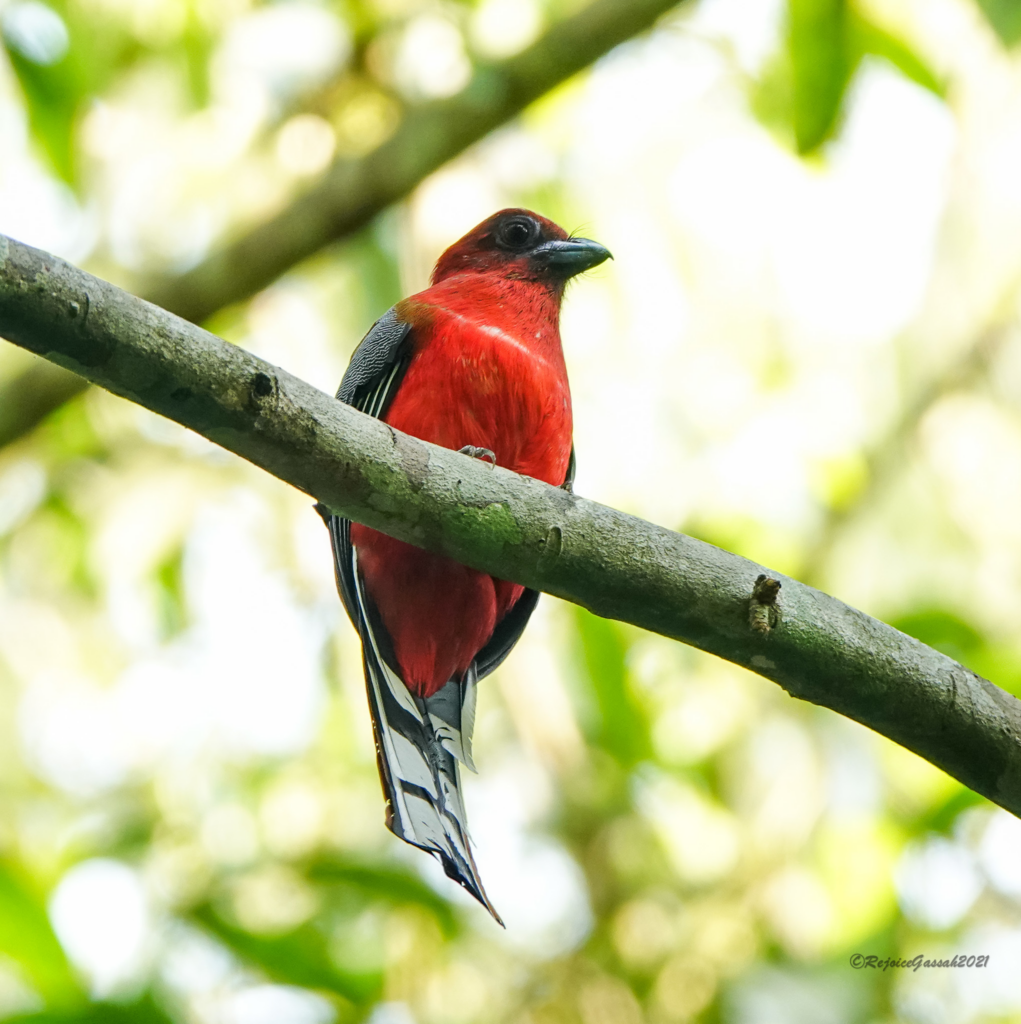 “red-headed trogon, trogon à tête rouge, trogón cabecirrojo” by Rejoice Gassah is licensed under CC BY 4.0.
“red-headed trogon, trogon à tête rouge, trogón cabecirrojo” by Rejoice Gassah is licensed under CC BY 4.0.
This bird is regarded as of Least Concern on the IUCN Red List.
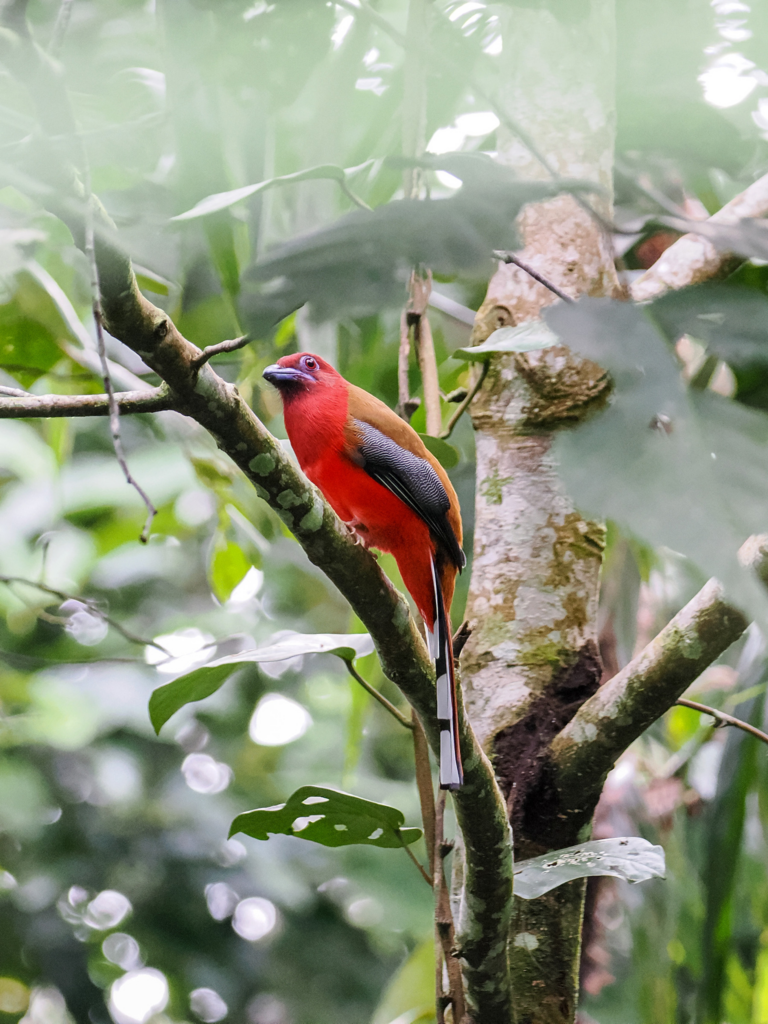 “red-headed trogon, trogon à tête rouge, trogón cabecirrojo” by CheongWeei Gan is licensed under CC BY 4.0.
“red-headed trogon, trogon à tête rouge, trogón cabecirrojo” by CheongWeei Gan is licensed under CC BY 4.0.
Listen to this bird:
This article uses material from Wikipedia.org which is licensed under the GNU Free Documentation License via Copyright Wikipedia. Images on this page are the sole property of the photographers (unless marked as Public Domain). Please read the license and or contact the photographers directly before using them for any purpose. Thank you all.
Dressed Like A Giant Bumblebee, He Is The Only One In His Range Wearing Such A Stunning Swept Back Crest!
Please SHARE this article with all your bird-loving friends and family.

